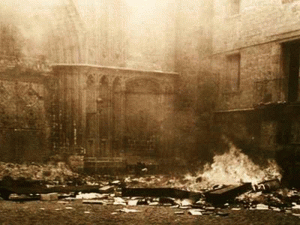Masculinity, sexuality & anti-clerical violence
Abstract of the 2011 George Watt Memorial Award in the Graduate Category. Read the full winning essay here.
In July 1936, a rightwing military rebellion against the democratically elected government of the Spanish Second Republic plunged the republican state into disarray and divided the country geographically. On territory which remained under republican authority, armed workers who had collaborated in the defeat of the rebellion took advantage of radical changes in political opportunities to stage a spontaneous revolution. As they launched physical attacks against the symbols and representatives of rightwing politics and of the oppressive old order, they destroyed countless ecclesiastical buildings and executed almost 7,000 religious personnel. Priests’ longstanding position as ideological and class enemies had been cemented for many workers during the intense Catholic and anticlerical mobilization of the peacetime republican years (1931-1936). Now, religious personnel became the first and most furiously targeted victims of revolutionary violence.
This essay examines a crucial facet of violence against the clergy: the processes by which male identities, and popular ideas regarding priests’ sexuality and masculinity, influenced the forms and intensity of anticlerical violence. During the conflict, acts of violent anticlerical collective action were committed primarily by male workers. Although women did take part in attacks upon church property—and occasionally upon religious personnel—they were greatly outnumbered by their male counterparts. This essay explores anticlerical violence as an overwhelmingly male phenomenon whose logic and rhetoric were derived from the cultural norms of 1930s Spanish society. In doing so, it scrutinizes the relationship between male sexuality, masculinity and anticlerical violence. It also investigates the ways in which rapid social and political changes during the first third of the twentieth century, and the struggle to define the boundaries between domestic space and public space which was being waged by male anticlerical workers, had a crucial impact upon the ways in which priests and nuns were treated by their attackers.
Maria Thomas is a doctoral student at Royal Holloway (University of London).













